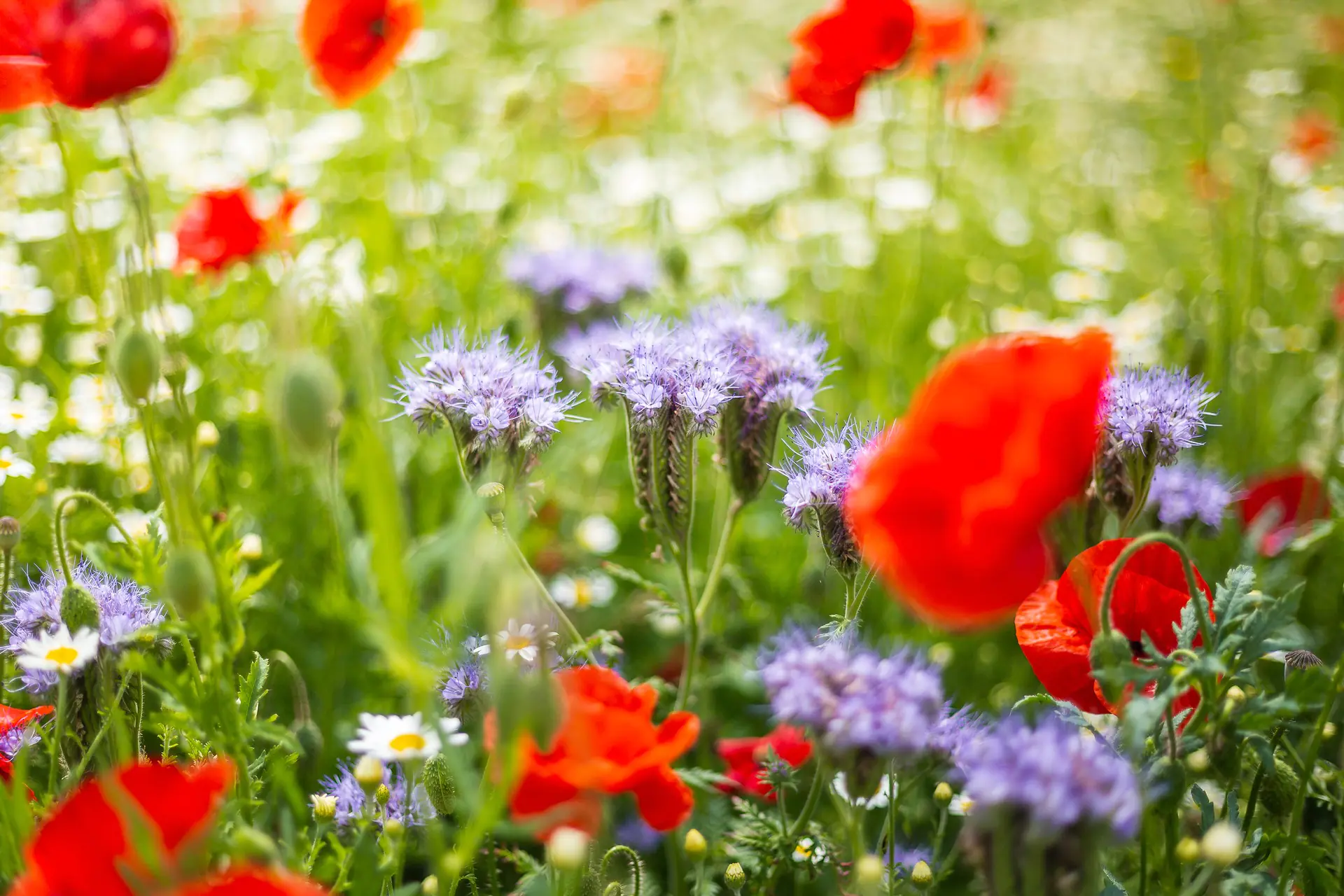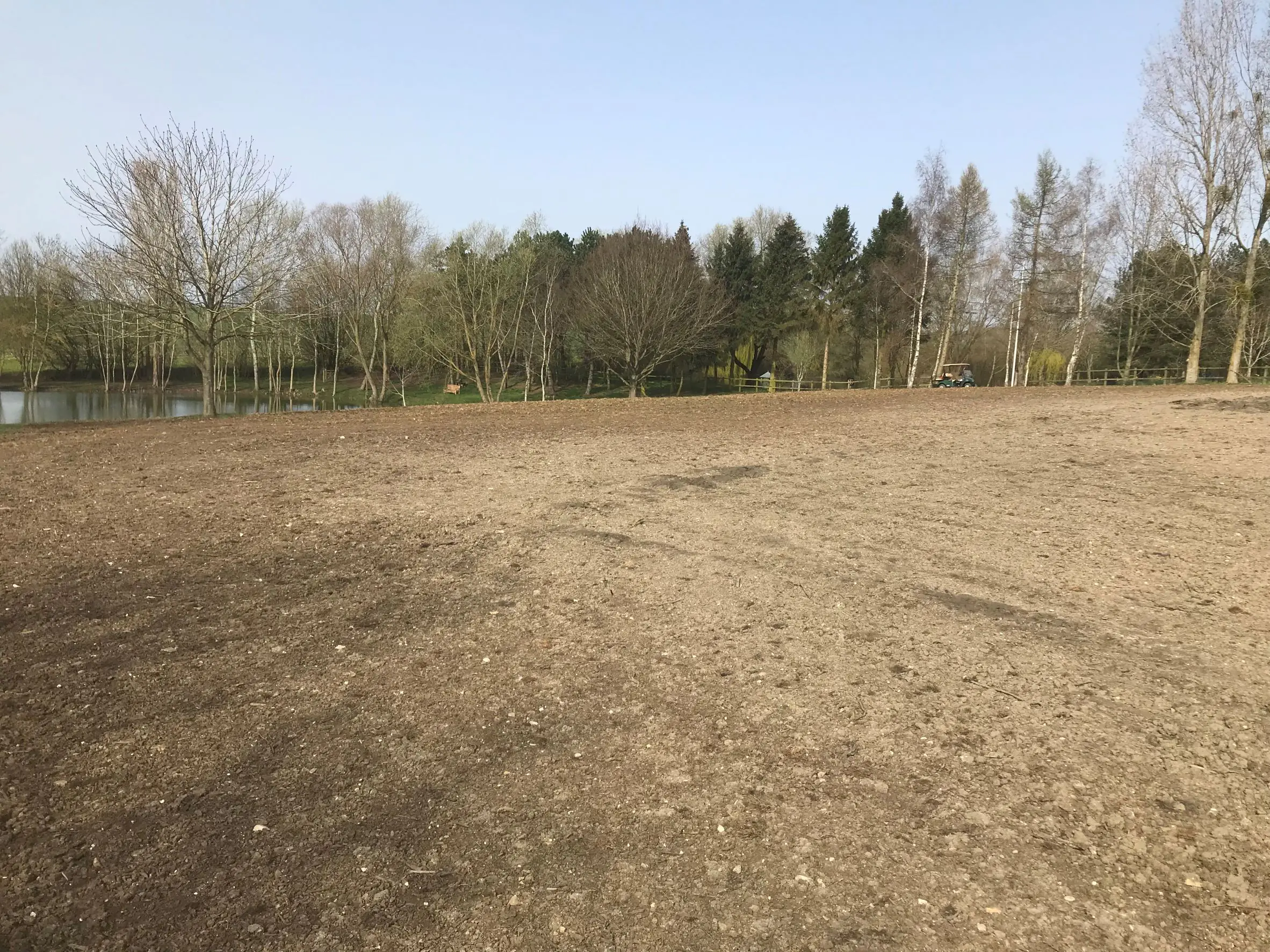How to prepare soil for wildflowers
This Germinal Amenity guide can help you figure out how to prepare soil for wildflowers effectively.

Before sowing wildflower seeds, we need to know how to prepare the ground effectively. This guide will outline how to prepare soil for wildflowers.
Getting ready to sow wildflower seed mixtures
As much attention should be given to wildflower seedbed preparation as with any other sowing. The more attention devoted to providing a fine, friable seedbed, the better the establishment of the wildflower seed mixture will be.
Physical constraints such as steep slopes can restrict your ability to prepare the ground for wildflowers. Unfortunately, you need to temper your expectations and accept that establishment will be more challenging on such sites.
Compared to sowing grass seed, greater effort is required when preparing a wildflower seedbed. This is because broadleaved weeds in grass swards are easier to control thanks to selective herbicides. Sowing wildflower seeds into grass is another method that some people use. However, this guide is focused on preparing soil for wildflower seeds.
Soil types
Traditional wisdom dictates that wildflower seed mixtures tend to prefer less fertile soils. While accurate for most ‘True Meadow’ mixtures, it’s less important with ‘Urban Meadow’ types, non-native ‘garden types’ and less specialised UK native wildflower species. To learn more about wildflower meadow management, use this guide.
Cornfield annuals or perennials such as Ox eye daisy will grow readily on fertile soil, including imported topsoil. Of course, the key point to remember is topsoil generally harbours more weed seeds, so competition is likely to be greater. Thankfully, this problem can be mitigated if recognised.
How to prepare ground for wildflowers
Anyone preparing ground for wildflower seeds should aim to achieve the following:
- The ground should be free of weeds, particularly dock leaves and thistles
- Stability is important, especially on gradients. For embankments steeper than 45%, stabilising matting can be used to secure the bank
- Medium tilth to allow the seed to be worked into the very top of the root zone
In most cases, the two factors most within our control are to ensure the ground is weed-free and that it has a good tilth to work with.
Weed control
There are two ways to control weeds: cultural and chemical. Ideally, cultural control will achieve the desired result. In some situations, however, an application of a non-residual herbicide such as glyphosate is required.
Although it can seem like a paradox to apply a chemical during wildflower establishment, it is sometimes vital. Otherwise, you can see the area outcompeted by weeds, which can sometimes lead to the custodians losing patience. If they turn to a lawn-type mixture instead, this won’t benefit wildlife and pollinators in the long run.
Cultural
Cultural entails removing existing vegetation by physical means. On small sites, this means removing noxious species by hand, while ploughing might be needed on a larger scale.
Ploughing to a depth of 150-220 mm will bury any existing ground cover while bringing less fertile material to the surface, ready to be prepared as a wildflower seedbed.
Ploughing to this extent is often referred to as primary cultivation, and secondary cultivation to create the seedbed will be required.
If the site is reasonably free of ground cover and has a workable substrate already, then it might be possible to create a seedbed via secondary cultivation. Within wildflower soil preparation, rotovating can help create a friable seedbed down to a depth of 50-100 mm.
Chemical: Use of non-residual herbicides
If the cultivated area has high levels of weeds such as docks, Fat hen or Nettles, it is recommended to follow the secondary cultivation process by leaving the area for a few weeks to let any weed seedlings germinate.
An application of a non-residual herbicide can kill them off and create a clean seedbed with reduced competition. Just remember to wait until the weed seedlings have chitted but are still small.
You should be able to sow wildflower seeds no later than two weeks after application, but always remember to check the label of the product you use.
Do not re-work the area after your herbicide application, as this will churn new weed seeds to the surface. Sow your wildflower seed mixture directly into the clean seedbed you have created. For advice on mixture selection, check out our How to choose the best wildflower seed mix guide.
How to prepare a wildflower bed
The aim is to create a workable seedbed with a medium tilth so you can sow wildflower seeds and incorporate them into the top of the root zone. At times, two cultivations might be needed.

Primary cultivation
As previously described, ploughing can bury unwanted ground cover and bring less fertile material to the surface. Unfortunately, it won’t provide a workable seedbed, so a second cultivation is needed.
Secondary cultivation
After primary cultivation – or, if there is no ground cover and the soil is of a reasonable composition and ploughing is not needed – you should cultivate the soil.
There are various types of machinery available, from tractor-mounted discs or tried cultivation, right down to pedestrian rotavators. Please note that clay soils will require more effort than sandy soils.
If the topsoil has been removed for use elsewhere on site, you will be cultivating a subsoil. These soils are notoriously difficult to prepare to a tilth.
However, every effort should be made to do so. These soils generally require adequate moisture to cultivate effectively, but not too much. So, it is sometimes the case that, subject to prevailing weather, the job is delayed until these soils can be worked.
On the positive side, these soils are less likely to carry a seed bank of unwanted weed species. To clarify, a seed bank comprises dormant weed seeds lying in the soil whose germination is triggered after they surface.
Workable soils are more likely to have higher levels of fertility and, therefore, higher levels of weed species in a seed bank.
You might need to return to such sites even after seeding to remove any particularly invasive species. These should either be manually removed or individually chemically treated with an appropriate applicator.
Ongoing maintenance
Ongoing maintenance is needed for the first one or two years in the establishment of a wildflower area. Because of the desire for these areas to be low maintenance, this eventuality is often overlooked and rarely budgeted.
Remember, ploughing and cultivation should be carried out when the soil moisture level is reasonably low, allowing it to crumble. Cultivation when wet and saturated will damage the soil structure, leaving the entire area unworkable and with very poor drainage.
How to sow wildflower seeds
As wildflower seeds are sown at such low rates (typically 3-5 g/m²), it is important to ensure that any equipment being used is capable of sowing at these levels.
To get around this, you might have to bulk out the seed with an inert carrier such as sharp sand. In all cases, however, it is necessary to regularly mix the seed during the sowing process to prevent the various species from separating.
Broadcasting
Seed can be applied by means of a tractor-mounted broadcasting distributor. This technique can give a degree of seed separation during distribution – heavier seeds will be thrown farther.

Drilling
A tractor-mounted seed drill is the most precise method of sowing wildflower seeds. However, it is important to monitor the depth of the drill.
Wildflower seed should not be drilled any deeper than 7 mm to maximise germination. As mixtures consist of seeds of different sizes, it is not suitable to use direct precision drills.
By hand
The most practical way of sowing small areas is by hand. To sow wildflower seed at the correct rate, the seed should be mixed with an inert carrier such as sharp sand. This will also help by marking the areas you have already sown.
Hydroseeding
Hydroseeding is a technique used on areas where conventional soil preparation is not possible, such as steep gradients or inaccessible locations at the top of steep embankments.
The seed is sprayed onto the surface in a liquid mulch. The mulch then provides soil stabilisation and a medium into which the seed can germinate.
Although hydroseeding is effective for sowing seeds in inaccessible areas, it is not a substitute for correct seedbed preparation. If the area is inaccessible and the seedbed is poor, then the establishment will suffer.
This is no fault of the hydroseeder or the seed sown – it is just a fact that needs to be recognised by landscape architects and clients alike.
In all cases, it is advantageous to gently roll the seed in where possible. Perhaps with one or two runs with a Cambridge (ringed) roller to ensure good soil-to-seed contact.
How to prepare soil for wildflowers
Please don’t hesitate to contact one of our Germinal Amenity experts if you have any queries about how to prepare soil for wildflower seeds.


